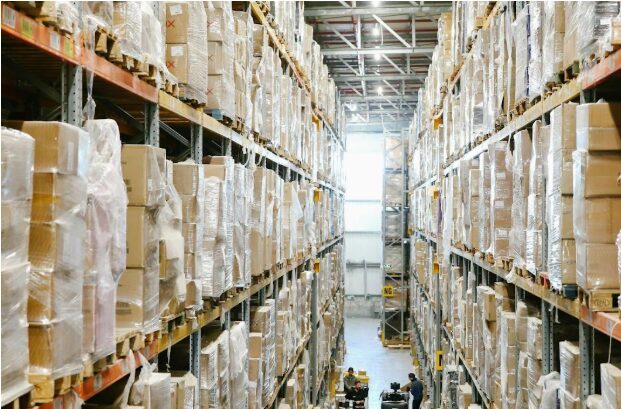Speed has become something of a corporate obsession. Fast shipping, fast scaling, fast tracking—all signs of a business that’s trying to keep pace with both ambition and expectation. But rapid growth doesn’t happen in a vacuum. It usually involves a mix of decent timing, questionable coffee intake, and increasingly, partnerships with third-party logistics providers.
The 3PL industry isn’t shiny or loud. It doesn’t trend on social media. But it’s quietly propping up the brands you see online every day. And 3pl warehousing is often the first domino—freeing up time, capital, and brain space for businesses that would rather focus on product development than parcel logistics.
Here’s how the 3PL industry is quietly, steadily, helping companies grow faster without falling apart.
1. Turning Warehousing From Burden to Benefit
Anyone who’s tried to stack, ship, or store hundreds of units from their garage knows that storage becomes a problem faster than most people expect. And not a fun, intellectual problem. A back-hurting, space-hogging, “where did I put that box” kind of problem.
This is where 3PL warehousing steps in—not just with shelves, but with systems. Inventory isn’t just stored; it’s scanned, tracked, rotated, and dispatched with a precision most of us can only dream of achieving with our personal belongings. The right 3PL partner can offer scalable space that expands or contracts as needed, without long leases, facility headaches, or an urgent need to buy another barcode scanner.
The result? Businesses aren’t sinking cash into fixed infrastructure before they’re ready. And that flexibility makes scaling a lot less risky.
2. Speeding Up Shipping Without the Drama
Fast shipping is one of those things customers expect but rarely appreciate—until it goes wrong. For businesses, hitting those delivery timeframes consistently means having the right product in the right place, ready to move the moment the order drops.
3PLs have already built the networks to do this. Carrier relationships, negotiated rates, multi-zone fulfillment—it’s all baked into the service. And because they handle the logistics across dozens (or hundreds) of clients, they’ve got volume discounts and established systems most small businesses couldn’t replicate on their own, even if they tried. Which, to be fair, some have. Briefly.
So instead of choosing between slow shipping or expensive shipping, businesses working with 3PLs get a third option: shipping that’s both fast and affordable. Without needing to sell a kidney to pay for it.
3. Enabling Global Growth Without Global Headaches
International expansion sounds glamorous. Until someone mentions customs forms. Or shipping insurance. Or duty rates that fluctuate more than your caffeine tolerance during Q4.
One of the underappreciated strengths of a good 3PL provider is that they already know how to move product across borders without triggering nightmares. They’ve dealt with compliance quirks, regional regulations, and inexplicably delayed shipments more times than they’d care to count.
That means when a business wants to ship to Singapore, sell in Spain, or test the waters in Canada, they don’t have to build a global infrastructure from scratch. The 3PL already has distribution centers, export pathways, and legal know-how to smooth the journey.
It’s not just logistics support. It’s strategic permission to grow outward, not just upward.
4. Freeing Founders From the Tyranny of Tape Guns
Time is rarely the thing that breaks a business. But how it’s spent? That’s a different story. A founder who’s knee-deep in packing peanuts and order slips probably isn’t doing the deeper thinking required to keep the business moving forward.
Outsourcing fulfillment means reclaiming time. The kind of time that lets you consider new products, build customer relationships, test new markets, or—just maybe—take an actual lunch break.
3PLs offer more than logistics. They offer leverage. The ability to redirect energy away from cardboard and couriers and towards the stuff that actually grows revenue.
5. Offering Data That’s Not Just Decorative
The good 3PL providers don’t just move your stock. They track it, monitor it, and present it back to you with dashboards that (mostly) make sense. Instead of guessing what’s popular or scrambling during stock outs, businesses get real-time insight into inventory, order velocity, seasonal shifts, and return rates.
With that information, companies make better decisions. They can stop over ordering the product that no one’s buying. Or double down on the thing that suddenly sold out in Brisbane or Boston.
Growth without visibility is just chaos in a nicer suit. A well-integrated 3PL takes away the guesswork and replaces it with data. Not just numbers, but actionable clarity.
The logistics industry doesn’t get a lot of applause. It’s unglamorous, largely invisible, and mostly designed to work so smoothly you forget it exists. But if you’re trying to build a business that grows fast without falling apart, a good 3PL is less of a luxury and more of a quiet necessity.
Less time spent on logistics. More space to scale. That’s the kind of trade-off most growing companies can live with.



































